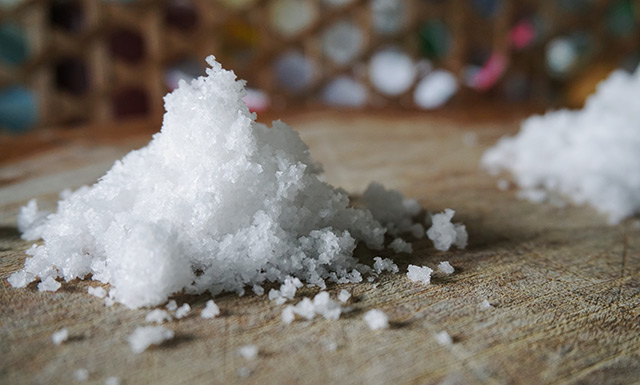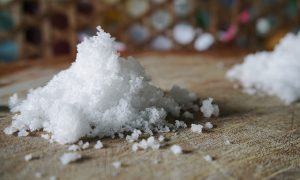
Sodium acetate sources, health risks
Tuesday, October 10, 2017 by Jhoanna Robinson
http://www.naturalpedia.com/sodium-acetate-sources-health-risks.html

Sodium acetate, which is the trihydrate sodium salt of acetic acid, is used as a sodium ion (Na+) and acetate ion to make solutions for dialysis, and as a systemic and urinary alkalizer, diuretic, and expectorant. It gives relief against respiratory diseases by being a bronchodilator and an antitussive, and it also functions as an anti-spasmodic agent. It also finds its uses as an electrolyte replenisher in isosmotic solution to replace extreme losses of extracellular fluid without disturbing normal electrolyte balance.
Sodium acetate looks like a white, hygroscopic (substance which readily absorbs moisture from the air) crystalline solid with an acetic odor. It aids in the mangement of cystitis or inflammation of the bladder. As a bicarbonate precursor, it can be used to treat acidosis, or the excess of acid in the blood that causes the pH to fall below 7.35.
Sodium acetate is also used in the tanning, petrochemical, and textile industries. It can be produced by reacting acetic acid (vinegar) with sodium hydroxide or sodium bicarbonate; it can also be obtained by mixing vinegar and baking soda. Sodium diacetate – a chemical compound formed by mixing vinegar and sodium acetate – is a known food additive, flavor enhancer, and preservative.
Sodium acetate reacts violently with potassium nitrate, nitric acid, and diketene and can probably cause an explosion when exposed to these substances.

Harmful effects that can be caused by sodium acetate
Sodium acetate, upon exposure to the eyes and skin, can leave a person feeling several kinds of irritation, such as rashes; hives; red, swollen, peeling, or blistered skin with or without fever; swelling of the face, lips, mouth, throat, tongue, tightness in the chest or throat; trouble breathing or talking; unusual hoarseness; and wheezing.
Sodium acetate can also cause electrolyte problems such as an irregular heartbeat, fast heartbeat, inability to pass urine or change in the amount of urine produced, confusion, dry mouth, dry eyes, extreme feelings of thirst, extreme tiredness or weakness, inability to feel hunger, mood changes, muscle pain or weakness, seizures, upset stomach, very bad dizziness or passing out, and vomiting.
Sodium acetate has been shown to bring about motor impairment, an effect which is hindered by the adenosine receptor blocker, 8-phenyltheophylline. It can also bring about sodium overload.
Body systems supported by sodium acetate
Sodium acetate is bad for the cardiovascular system. It puts pressure on the ventricular and the aortic muscles of the heart.
Sodium acetate is bad for the nervous system. It reduces spike frequency adaptation, or the ability of neurons to adapt to stimulus.
Where to learn more
Summary
Sodium acetate is used in the tanning, petrochemical, and textile industries.
Sodium acetate is bad for the cardiovascular and nervous systems.
Sodium acetate can bring about sodium overload.
Sources include:
Tagged Under: Tags: sodium acetate





